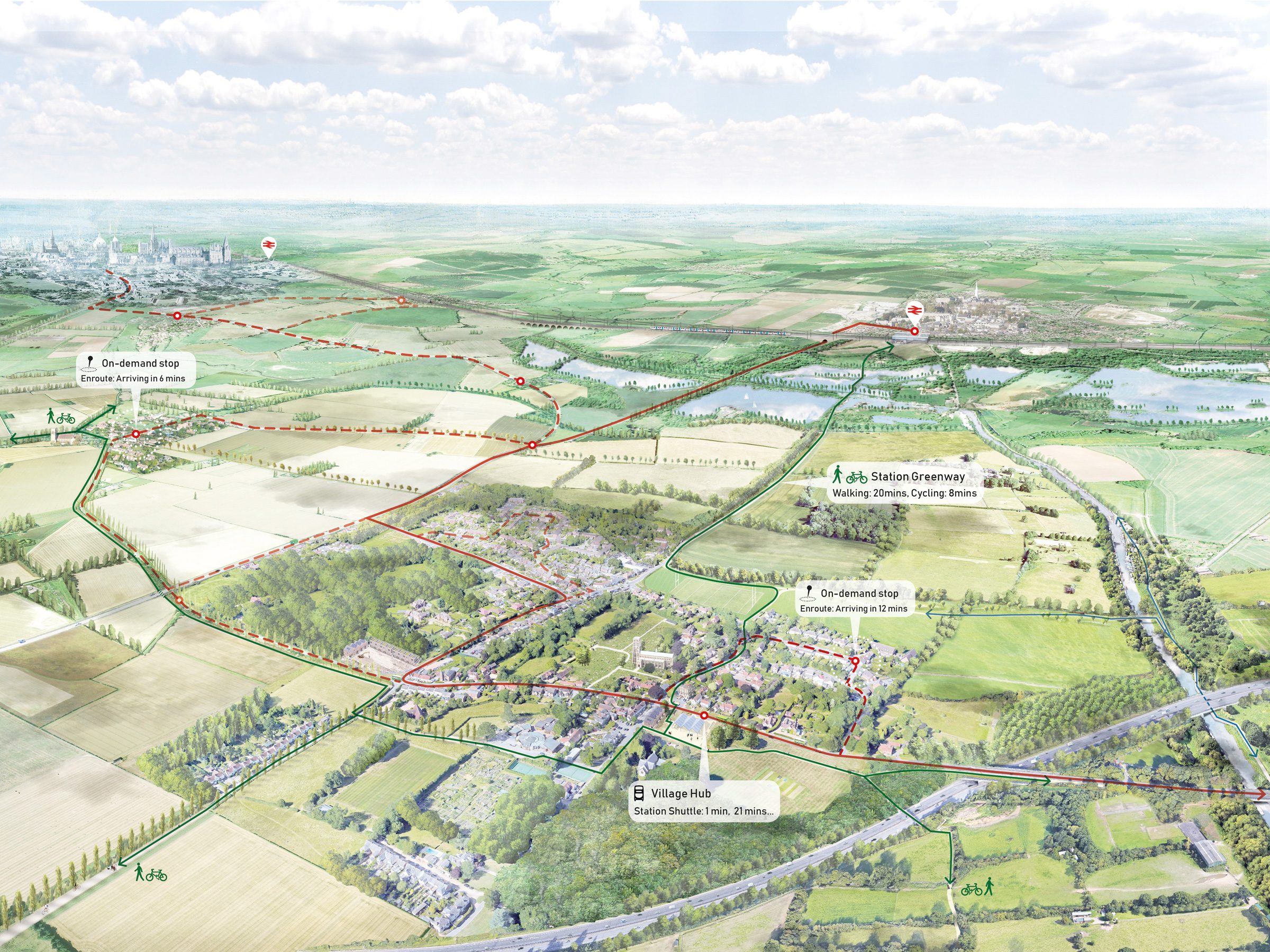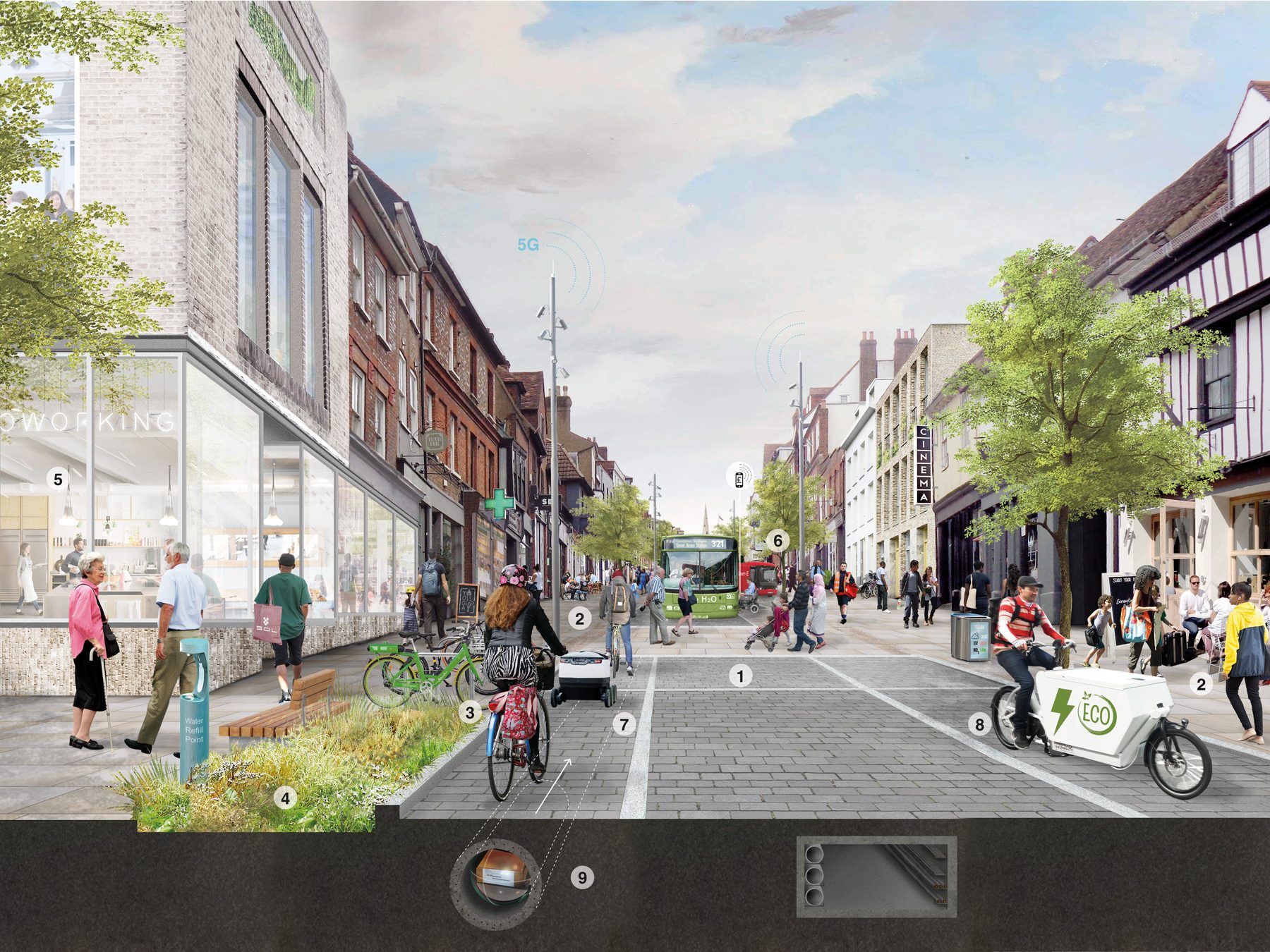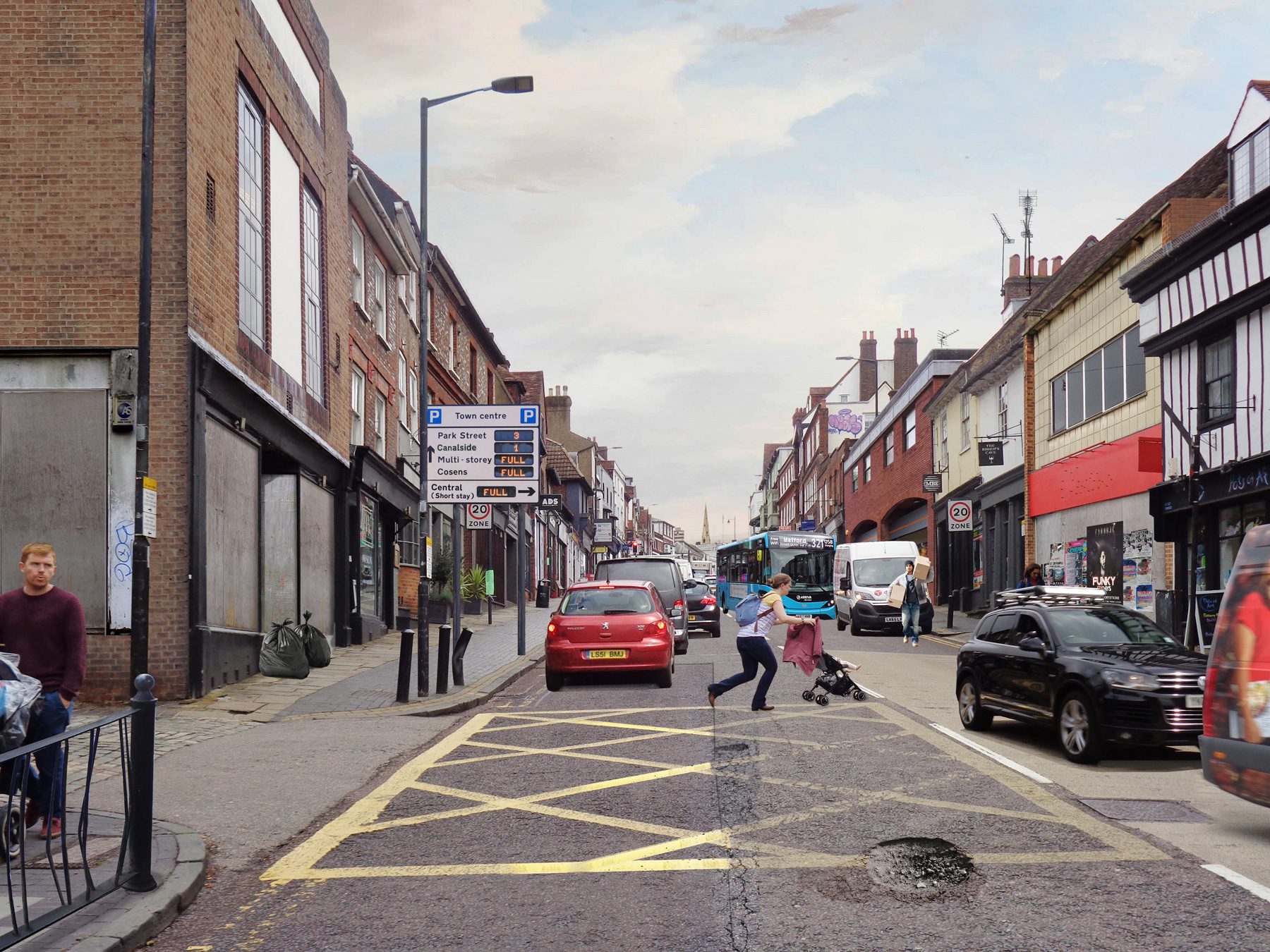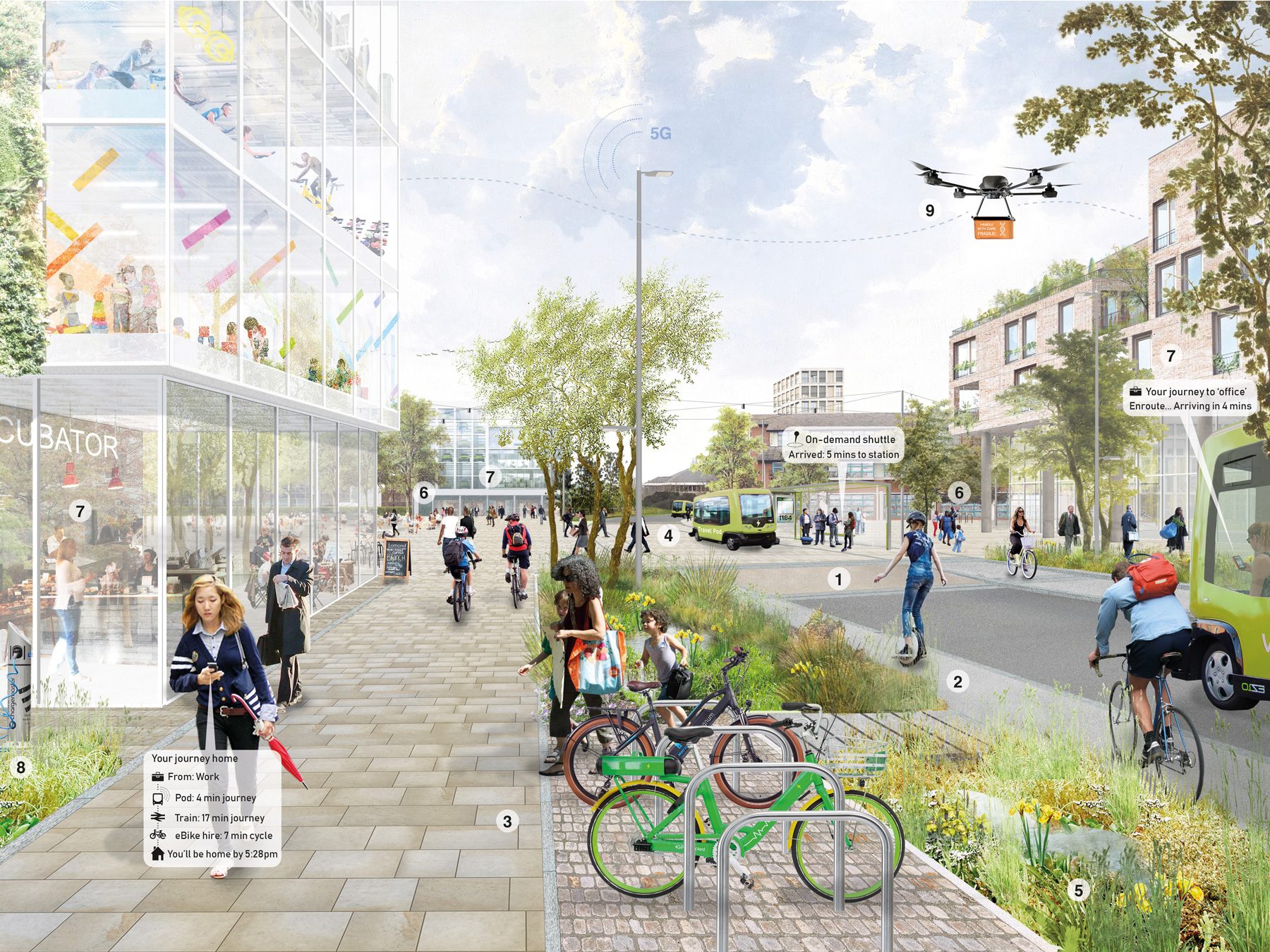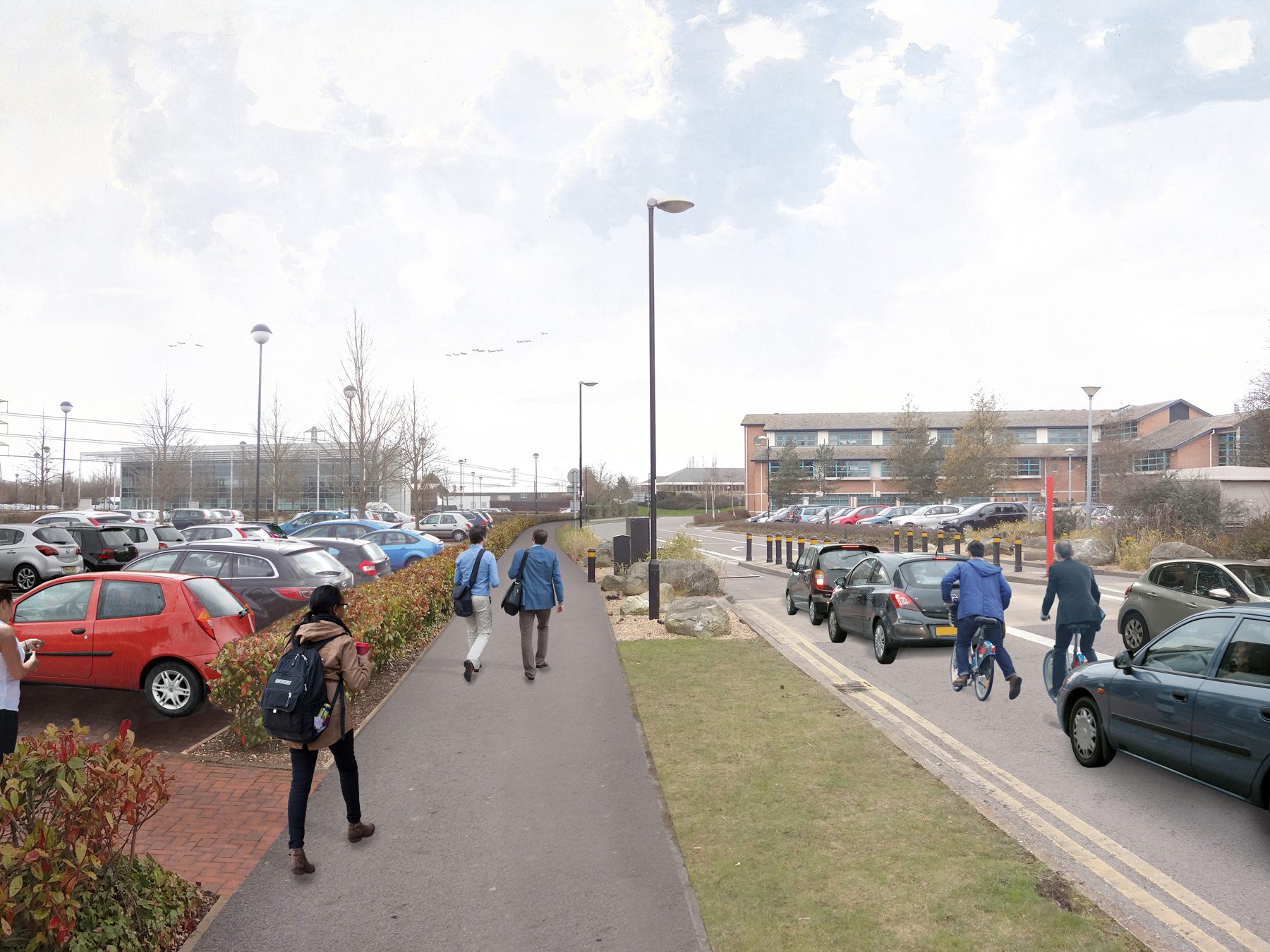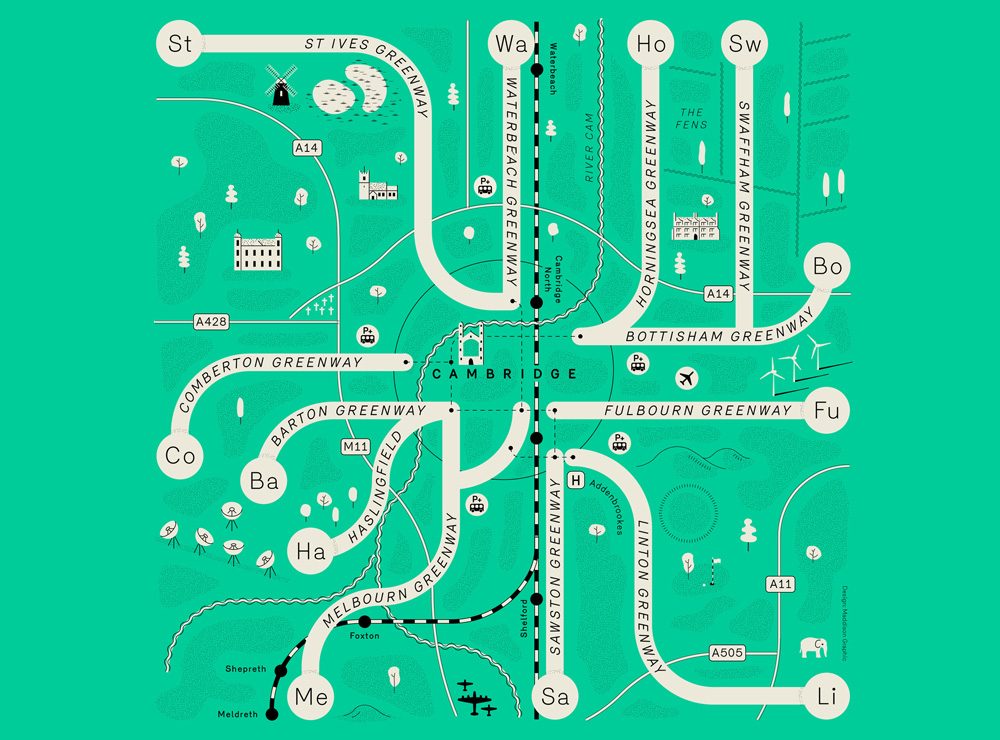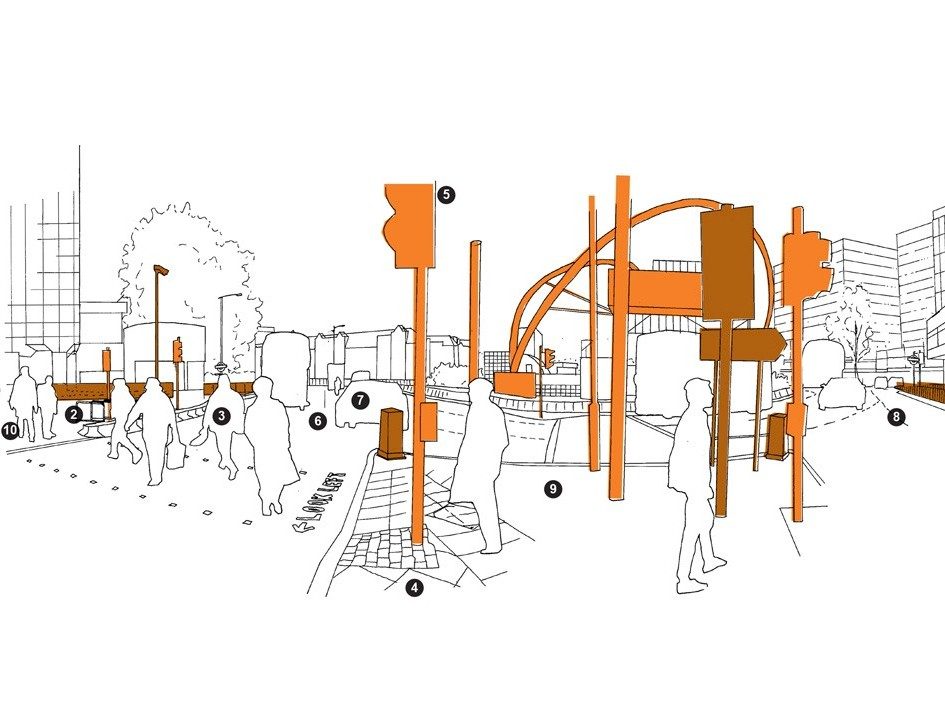England's Economic Heartland is a coalition of councils in the Cambridge to Oxford arc. It acts as a promoter of strategic infrastructure and as the region's sub-national transport body. It is focused on addressing barriers to growth, and connecting people and places with opportunities and services, in a way that delivers 'net betterment' in terms of impact on the natural and built environment.
5th Studio was commissioned to produce a series of four 'Future Visions' as part of England's Economic Heartland's Outline Transport Strategy: Framework for Engagement. The images imagined a business as usual and future vision scenario for two rural and two urban environments.
The images explore ways in which the use of technology and transport infrastructure can be used to better connect existing communities and enable new sustainable development. The visions include greenways, on-demand bus routes / shuttle pods and guided busways as ways through which car dependence can be reduced. Ideas about 'First Mile Last Mile' logistics also feature in consolidation centres and autonomous delivery systems.
